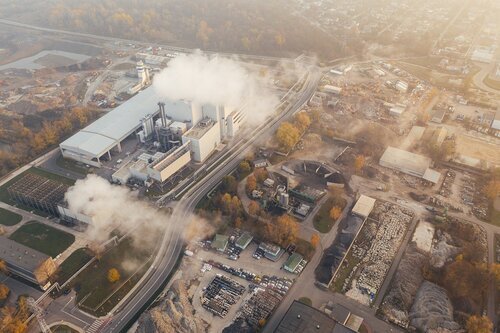L’empreinte carbone colossale des banques
Dans un rapport récent, Oxfam épingle plusieurs entreprises, et particulièrement les banques, en raison de leur empreinte carbone colossale. Dans ce document établi sur la base de chiffres fournis par la société Carbon4 Finance, l’ONG constate qu’« aucun secteur d’activité n’est aligné avec l’Accord de Paris ». Pour rappel, l’Accord de Paris vise à renforcer la riposte mondiale à la menace des changements climatiques, notamment en contenant la hausse moyenne de la température de la planète en dessous de 2 degrés par rapport aux niveaux préindustriels.
Parmi les 35 entreprises françaises étudiées par Oxfam, seules trois (EDF, Schneider Electric et Legrand) ont une empreinte carbone « susceptible de les faire rester dans une trajectoire compatible avec un réchauffement climatique inférieur à 2 degrés », précise le rapport. Paradoxalement, dix sociétés dont trois banques (BNP Paribas, Crédit Agricole et Société Générale) ont « une trajectoire associée à un réchauffement supérieur à +4 degrés ».
Ainsi, si depuis 2015 les banques se sont toutes engagées publiquement à s’aligner avec l’Accord de Paris, beaucoup d’acteurs estiment que leurs annonces sont insuffisantes. Selon l’Oxfam, l’intervention de l’État est indispensable.
Transparence climatique : l’EBA fait le point sur le niveau d’avancement des banques
Alors que le calendrier européen s’accélère, l’Autorité bancaire européenne vient de lancer une consultation afin de savoir si le secteur bancaire est capable de publier son exposition au risque climatique. Le régulateur s’est appuyé sur le Green Asset Ratio, un nouvel indicateur qui permet de connaître l’implication des banques dans les activités favorables à la lutte contre le dérèglement climatique. Publié chaque année, il déterminera sur le total des actifs, le pourcentage de prêts, avances et titres de créance jugés écologiquement durables.
En parallèle, l’EBA a mené une enquête auprès d’une dizaine de banques pour faire le point sur le niveau d’avancement de leurs travaux en matière de transparence climatique. Celle-ci montre que si la plupart des banques ont commencé à s’emparer du sujet, elles n’ont généralement pas développé de processus pour évaluer et calculer leur alignement avec les indicateurs de performance clés. Le constat est encore plus inquiétant concernant les établissements de plus petite taille qui « n’ont même pas entamé les démarches ou alors n’en sont qu’aux prémices », précise l’Autorité.
Pour soulager les banques en pleine crise sanitaire, l’EBA a accepté des « estimations » pour les premières publications attendues en 2022, une souplesse inhabituelle qui montre toute l’ampleur du défi.
